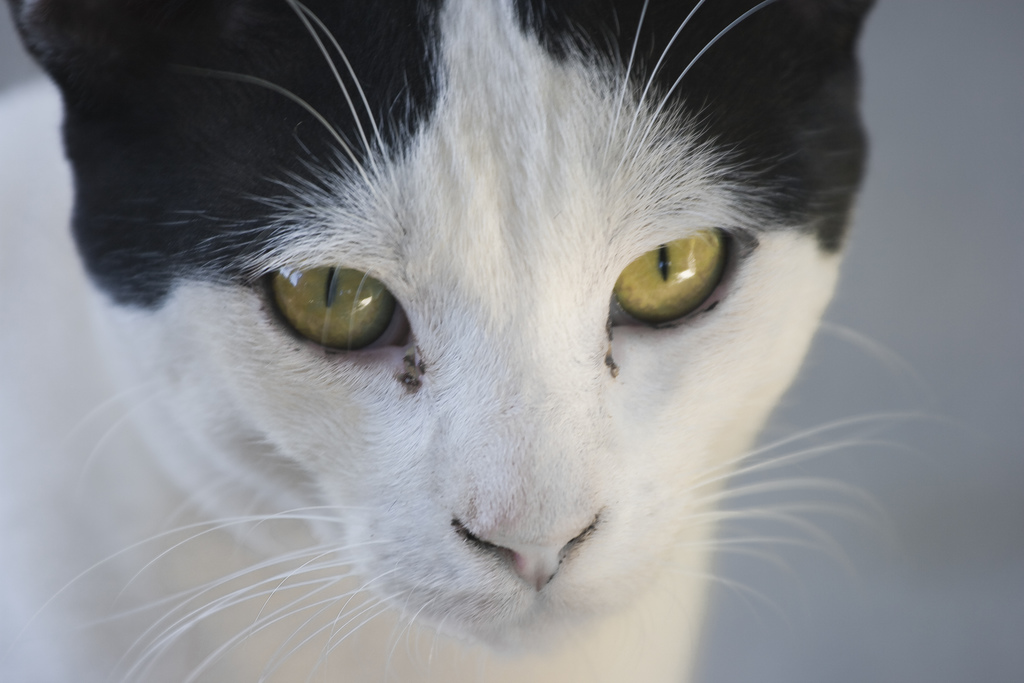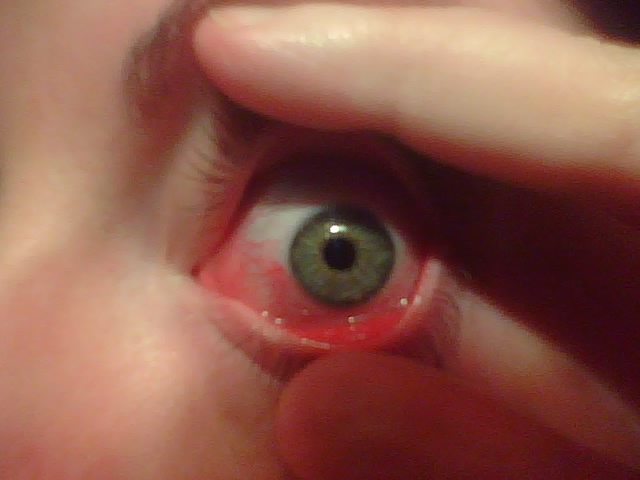|
Rheum
Rheum (; from Greek language, Greek: wikt:ῥεῦμα, ῥεῦμα ''rheuma'' 'a flowing, rheum') is a thin mucus naturally discharged from the eyes, nose, or mouth, often during sleep (contrast with mucopurulent discharge).Amodio, Aime"Where Do Eye Boogers Come From?" Families.com blogHiskey, Daven"What the 'Sleep' In Your Eyes Is" ''Today I Found Out'', 23 February 2011. Rheum dries and gathers as a crust in the corners of the eyes or the mouth, on the eyelids, or under the nose. It is formed by a combination of mucus (in the case of the eyes, consisting of mucin discharged from the cornea or the Conjuctiva, conjunctiva), nasal mucus, blood cells, Skin, skin cells, or dust. Rheum from the eyes is particularly common. Dried rheum near the eyes is commonly called 'sleep', 'sleepy-seeds', 'sleepy buds',Eric Partridge, Paul Beale, ed., ''A Dictionary of Slang and Unconventional English'', 8th edition, 1984, ''s.v.'' 'sleepy sand', 'eye boogers', 'eye goop', 'sleepies', or 'eye gu ... [...More Info...] [...Related Items...] OR: [Wikipedia] [Google] [Baidu] |
Mucopurulent Discharge
Mucopurulent discharge is the emission or secretion of fluid containing mucus and pus (''muco-'' pertaining to ''mucus'' and ''purulent'' pertaining to ''pus'') from the eye, nose, cervix, vagina or other part of the body due to infection and inflammation. Types include: *In ophthalmology, mucopurulent discharge from the eyes, and caught in the eyelashes, is a hallmark sign of bacterial conjunctivitis. The normal buildup of tears, mucus, and dirt (compare rheum) that appears at the edge of the eyelids after sleep Sleep is a state of reduced mental and physical activity in which consciousness is altered and certain Sensory nervous system, sensory activity is inhibited. During sleep, there is a marked decrease in muscle activity and interactions with th ... is not mucopurulent discharge, as it does not contain pus. * Vaginal discharge References "Conjunctivitis: A Systematic Review of Diagnosis and Treatment" – NCBI Symptoms {{symptom-stub ... [...More Info...] [...Related Items...] OR: [Wikipedia] [Google] [Baidu] |
Cat Eyes Rheum 001
The cat (''Felis catus''), also referred to as the domestic cat or house cat, is a small Domestication, domesticated carnivorous mammal. It is the only domesticated species of the family Felidae. Advances in archaeology and genetics have shown that the domestication of the cat occurred in the Near East around 7500 BC. It is commonly kept as a pet and working cat, but also ranges freely as a feral cat avoiding human contact. It is valued by humans for companionship and its ability to kill vermin. Its retractable claws are adapted to killing small prey species such as mice and rats. It has a strong, flexible body, quick reflexes, and sharp teeth, and its night vision and sense of smell are well developed. It is a social species, but a solitary hunter and a crepuscular predator. Cat intelligence is evident in their ability to adapt, learn through observation, and solve problems. Research has shown they possess strong memories, exhibit neuroplasticity, and display cognitive skil ... [...More Info...] [...Related Items...] OR: [Wikipedia] [Google] [Baidu] |
Skin
Skin is the layer of usually soft, flexible outer tissue covering the body of a vertebrate animal, with three main functions: protection, regulation, and sensation. Other animal coverings, such as the arthropod exoskeleton, have different developmental origin, structure and chemical composition. The adjective cutaneous means "of the skin" (from Latin ''cutis'' 'skin'). In mammals, the skin is an organ of the integumentary system made up of multiple layers of ectodermal tissue and guards the underlying muscles, bones, ligaments, and internal organs. Skin of a different nature exists in amphibians, reptiles, and birds. Skin (including cutaneous and subcutaneous tissues) plays crucial roles in formation, structure, and function of extraskeletal apparatus such as horns of bovids (e.g., cattle) and rhinos, cervids' antlers, giraffids' ossicones, armadillos' osteoderm, and os penis/ os clitoris. All mammals have some hair on their skin, even marine mammals like whales, ... [...More Info...] [...Related Items...] OR: [Wikipedia] [Google] [Baidu] |
Body Fluids
Body fluids, bodily fluids, or biofluids, sometimes body liquids, are liquids within the Body (biology), body of an organism. In lean healthy adult men, the total body water is about 60% (60–67%) of the total Human body weight, body weight; it is usually slightly lower in women (52–55%). The exact percentage of fluid relative to body weight is inversely proportional to the percentage of body fat. A lean man, for example, has about 42 (42–47) liters of water in his body. The total body of water is divided into fluid compartments, between the Fluid compartments#Intracellular compartment, intracellular fluid compartment (also called space, or volume) and the extracellular fluid (ECF) compartment (space, volume) in a two-to-one ratio: 28 (28–32) liters are inside cells and 14 (14–15) liters are outside cells. The ECF compartment is divided into the interstitial fluid volume – the fluid outside both the cells and the blood vessels – and the Blood vessel, intravascular v ... [...More Info...] [...Related Items...] OR: [Wikipedia] [Google] [Baidu] |
WebMD
WebMD is an American corporation which publishes online news and information about human health and well-being. The WebMD website also includes information about drugs and is an important healthcare information website and the most popular consumer-oriented health site. WebMD was started in 1998 by internet entrepreneur Jeff Arnold. In early 1999, it was part of a three-way merger with Sapient Health Network (SHN) and Direct Medical Knowledge (DMK). SHN began in Portland, Oregon, in 1996 by Jim Kean, Bill Kelly, and Kris Nybakken, who worked together at a CD-ROM publishing firm, Creative Multimedia. Later, in 1999, WebMD merged with Healtheon, founded by Netscape Communications founder James H. Clark. History WebMD is best known as a health information services website, which publishes content regarding health and health care topics, including a symptom checklist, pharmacy information, drugs information, and blogs of physicians with specific topics, and provides a place t ... [...More Info...] [...Related Items...] OR: [Wikipedia] [Google] [Baidu] |
Conjunctivitis
Conjunctivitis, also known as pink eye or Madras eye, is inflammation of the conjunctiva, the thin, clear layer that covers the white surface of the eye and the inner eyelid. It makes the eye appear pink or reddish. Pain, burning, scratchiness, or itchiness may occur. The affected eye may have increased tears or be "stuck shut" in the morning. Swelling of the sclera may also occur. Itching is more common in cases due to allergies. Conjunctivitis can affect one or both eyes. The most common infectious causes in adults are viral, whereas in children bacterial causes predominate. The viral infection may occur along with other symptoms of a common cold. Both viral and bacterial cases are easily spread between people. Allergies to pollen or animal hair are also a common cause. Diagnosis is often based on signs and symptoms. Occasionally, a sample of the discharge is sent for microbial culture, culture. Prevention is partly by handwashing. Treatment depends on the underlying cause ... [...More Info...] [...Related Items...] OR: [Wikipedia] [Google] [Baidu] |
Dry Eye
Dry eye syndrome, also known as keratoconjunctivitis sicca, is the condition of having dry eyes. Symptoms include dryness in the eye, irritation, redness, discharge, blurred vision, and easily fatigued eyes. Symptoms range from mild and occasional to severe and continuous. Dry eye syndrome can lead to blurred vision, instability of the tear film, increased risk of damage to the ocular surface such as scarring of the cornea, and changes in the eye including the neurosensory system. Dry eye occurs when either the eye does not produce enough tears or when the tears evaporate too quickly. This can be caused by age, contact lens use, meibomian gland dysfunction, pregnancy, Sjögren syndrome, vitamin A deficiency, omega-3 fatty acid deficiency, LASIK surgery, and certain medications such as antihistamines, some blood pressure medication, hormone replacement therapy, and antidepressants. Chronic conjunctivitis such as from tobacco smoke exposure or infection may also lead to ... [...More Info...] [...Related Items...] OR: [Wikipedia] [Google] [Baidu] |
Allergic Conjunctivitis
Allergic conjunctivitis (AC) is Allergic Inflammation, inflammation of the conjunctiva (the membrane covering the white part of the eye) due to allergy. Although allergens differ among patients, the most common cause is hay fever. Symptoms consist of redness (mainly due to vasodilation of the peripheral small blood vessels), edema (swelling) of the conjunctiva, itching, and increased lacrimation (production of tears). If this is combined with rhinitis, the condition is termed allergic rhinoconjunctivitis (ARC). The symptoms are due to release of histamine and other active substances by mast cells, which stimulate dilation of blood vessels, irritate nerve endings, and increase secretion of tears. Treatment of allergic conjunctivitis is by avoiding the allergen (''e.g.'', avoiding grass in bloom during "hay fever season") and treatment with antihistamines, either topical (in the form of eye drops), or systemic (in the form of tablets). Antihistamines, medications that stabilize mast ... [...More Info...] [...Related Items...] OR: [Wikipedia] [Google] [Baidu] |
Nasolacrimal Duct
The nasolacrimal duct (also called the tear duct) carries tears from the lacrimal sac of the eye into the nasal cavity. The duct begins in the eye socket between the maxillary and lacrimal bones, from where it passes downwards and backwards. The opening of the nasolacrimal duct into the inferior nasal meatus of the nasal cavity is partially covered by a mucosal fold ( valve of Hasner or ''plica lacrimalis''). Excess tears flow through the nasolacrimal duct which drains into the inferior nasal meatus. This is the reason the nose starts to run when a person is crying or has watery eyes from an allergy, and why one can sometimes taste eye drops. This is for the same reason when applying some eye drops it is often advised to close the nasolacrimal duct by pressing it with a finger to prevent the medicine from escaping the eye and having unwanted side effects elsewhere in the body as it will proceed through the canal to the nasal cavity. Like the lacrimal sac, the duct is lin ... [...More Info...] [...Related Items...] OR: [Wikipedia] [Google] [Baidu] |
Blood Cell
A blood cell (also called a hematopoietic cell, hemocyte, or hematocyte) is a cell produced through hematopoiesis and found mainly in the blood. Major types of blood cells include red blood cells (erythrocytes), white blood cells (leukocytes), and platelets (thrombocytes). Together, these three kinds of blood cells add up to a total 45% of the blood tissue by volume, with the remaining 55% of the volume composed of plasma, the liquid component of blood. Red blood cells Red blood cells or ''erythrocytes'' primarily carry oxygen and collect carbon dioxide through the use of hemoglobin. Hemoglobin is an iron-containing protein that gives red blood cells their color and facilitates transportation of oxygen from the lungs to tissues and carbon dioxide from tissues to the lungs to be exhaled. Red blood cells are the most abundant cell in the blood, accounting for about 40–45% of its volume. Red blood cells are circular, biconcave, disk-shaped and deformable to allow them to sque ... [...More Info...] [...Related Items...] OR: [Wikipedia] [Google] [Baidu] |
Greek Language
Greek (, ; , ) is an Indo-European languages, Indo-European language, constituting an independent Hellenic languages, Hellenic branch within the Indo-European language family. It is native to Greece, Cyprus, Italy (in Calabria and Salento), southern Albania, and other regions of the Balkans, Caucasus, the Black Sea coast, Asia Minor, and the Eastern Mediterranean. It has the list of languages by first written accounts, longest documented history of any Indo-European language, spanning at least 3,400 years of written records. Its writing system is the Greek alphabet, which has been used for approximately 2,800 years; previously, Greek was recorded in writing systems such as Linear B and the Cypriot syllabary. The Greek language holds a very important place in the history of the Western world. Beginning with the epics of Homer, ancient Greek literature includes many works of lasting importance in the European canon. Greek is also the language in which many of the foundational texts ... [...More Info...] [...Related Items...] OR: [Wikipedia] [Google] [Baidu] |







